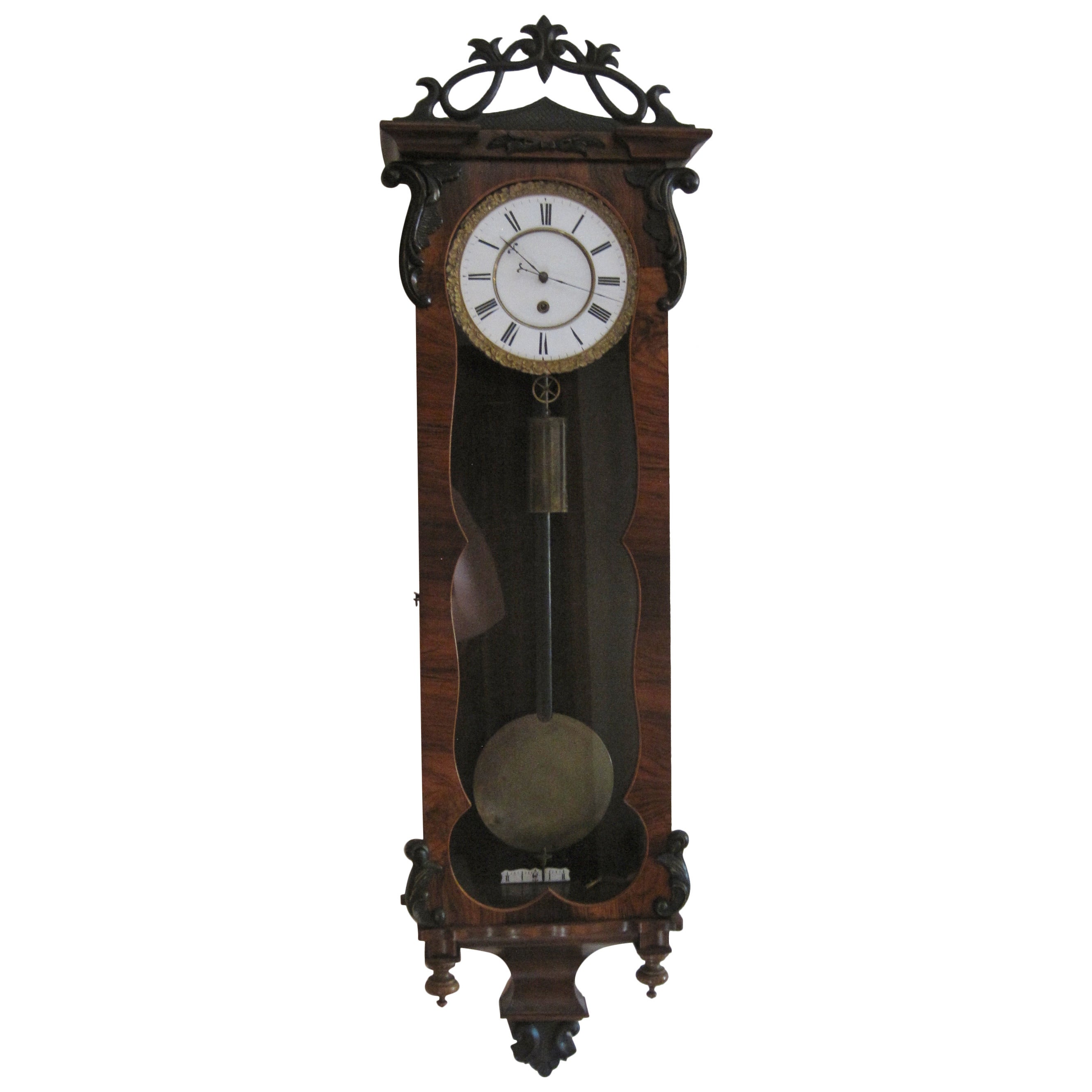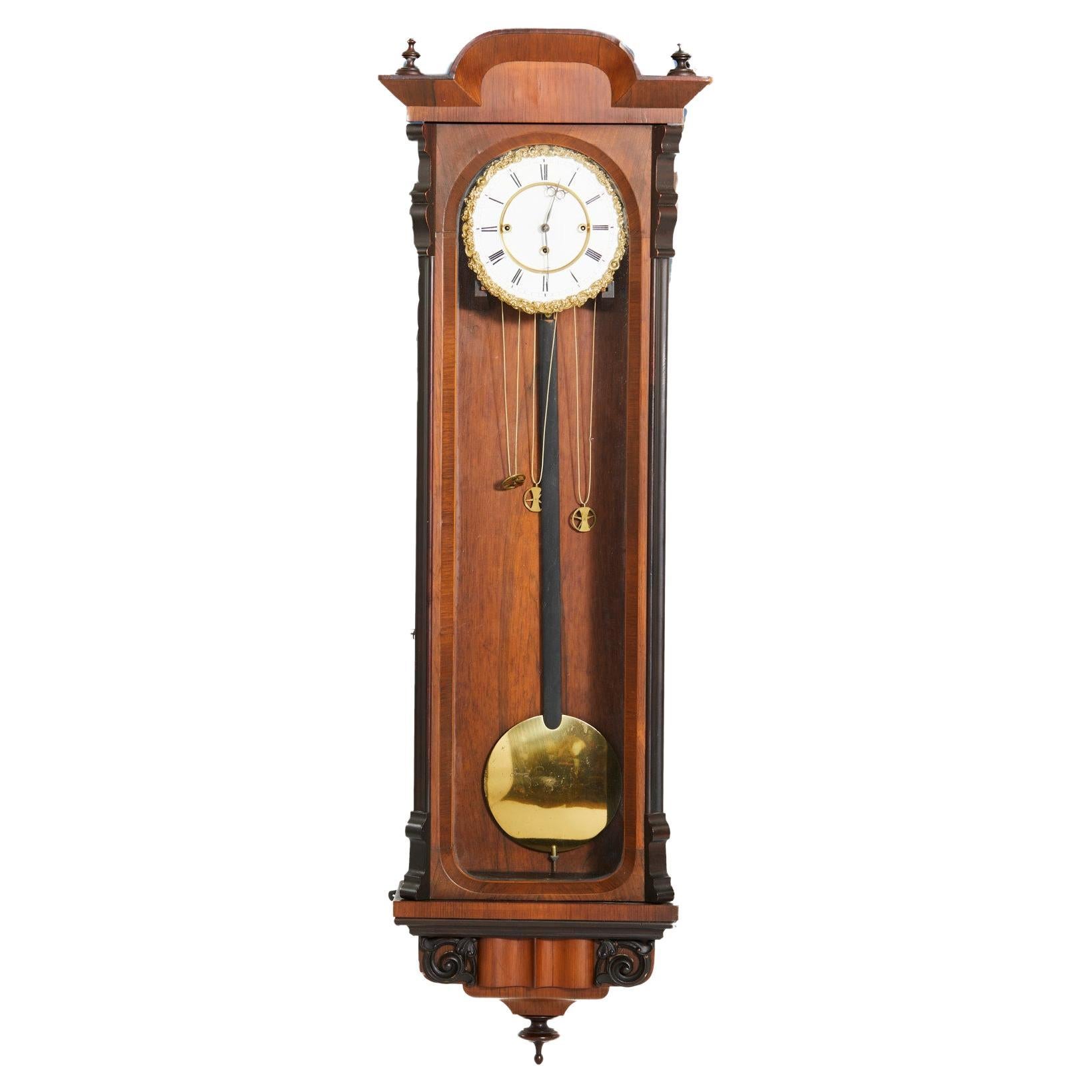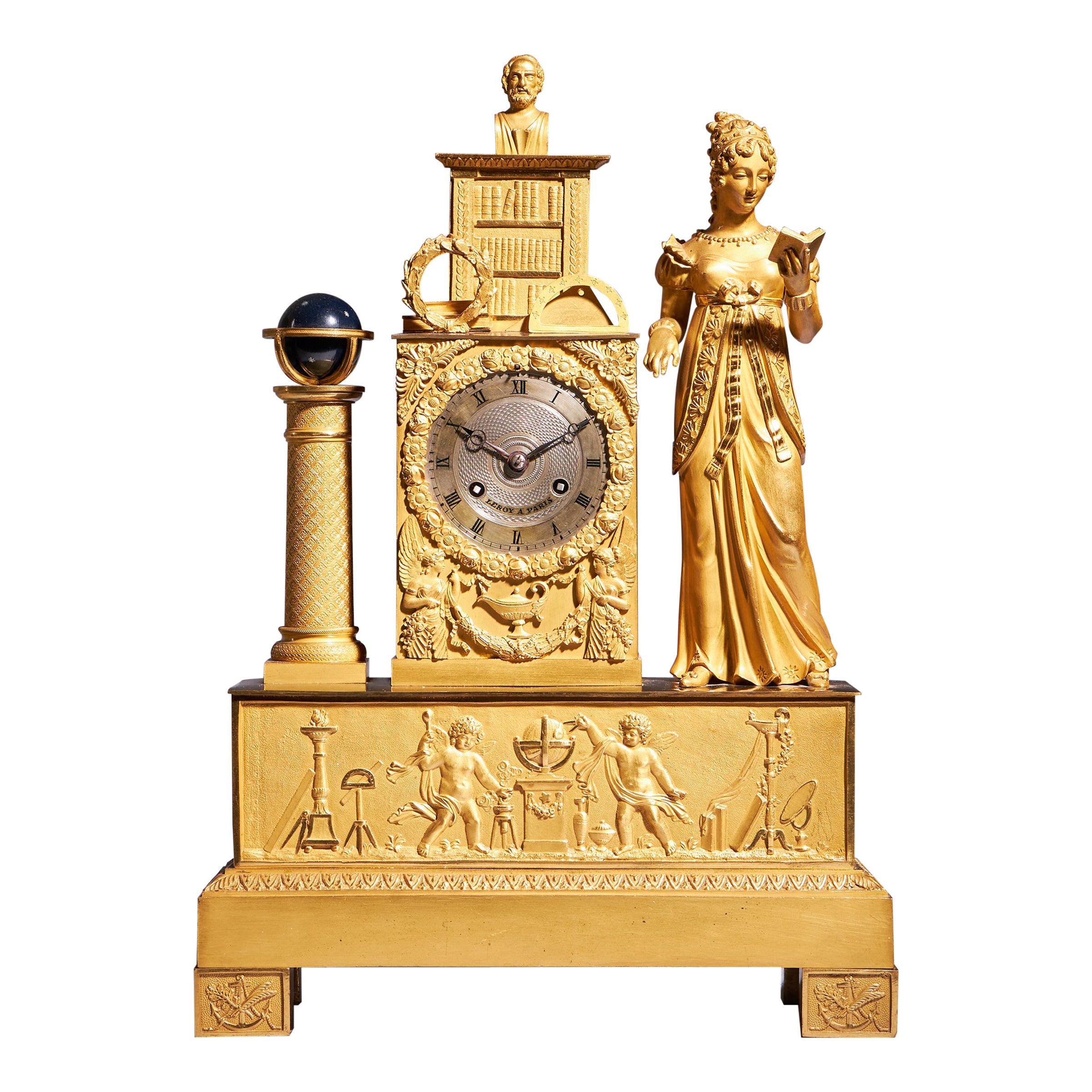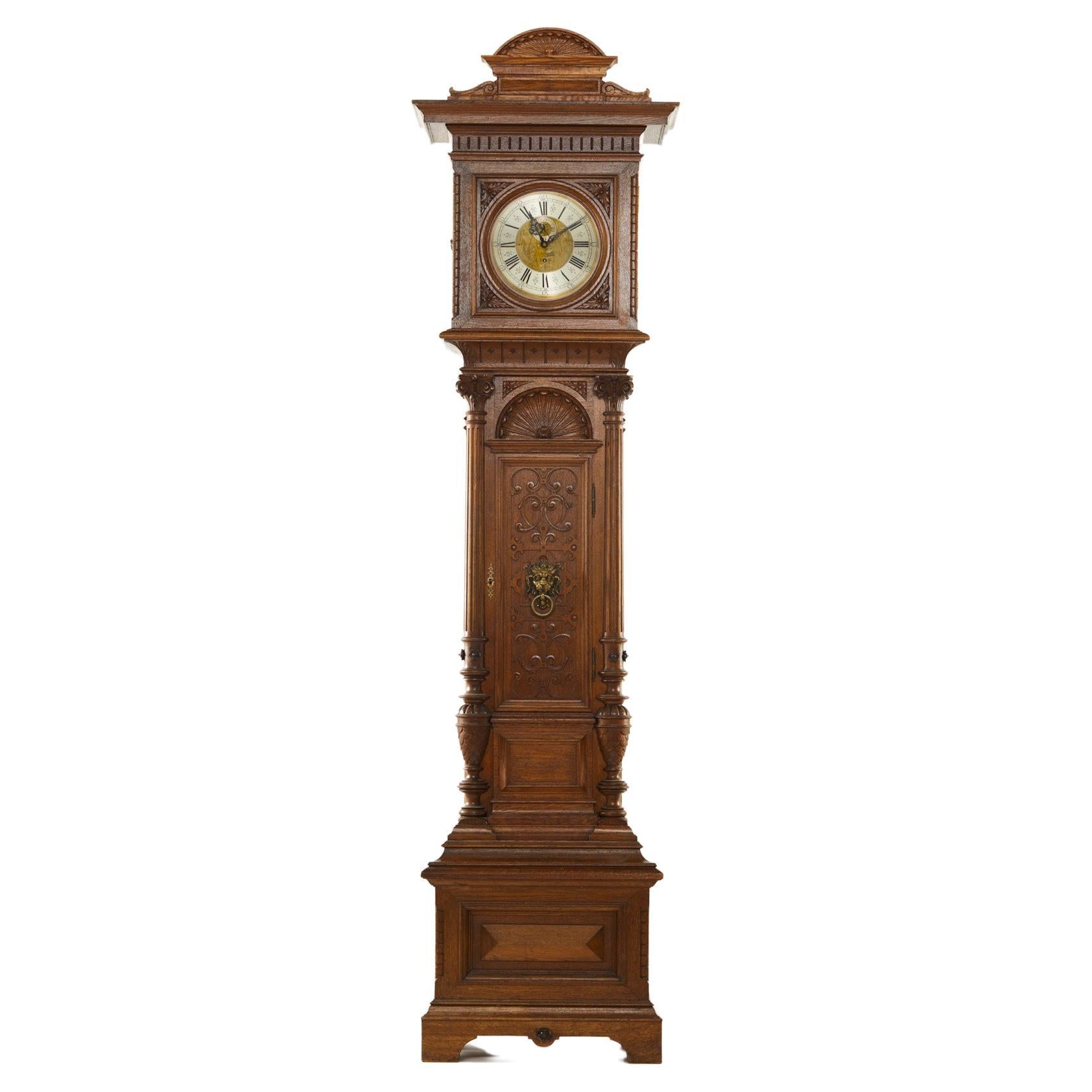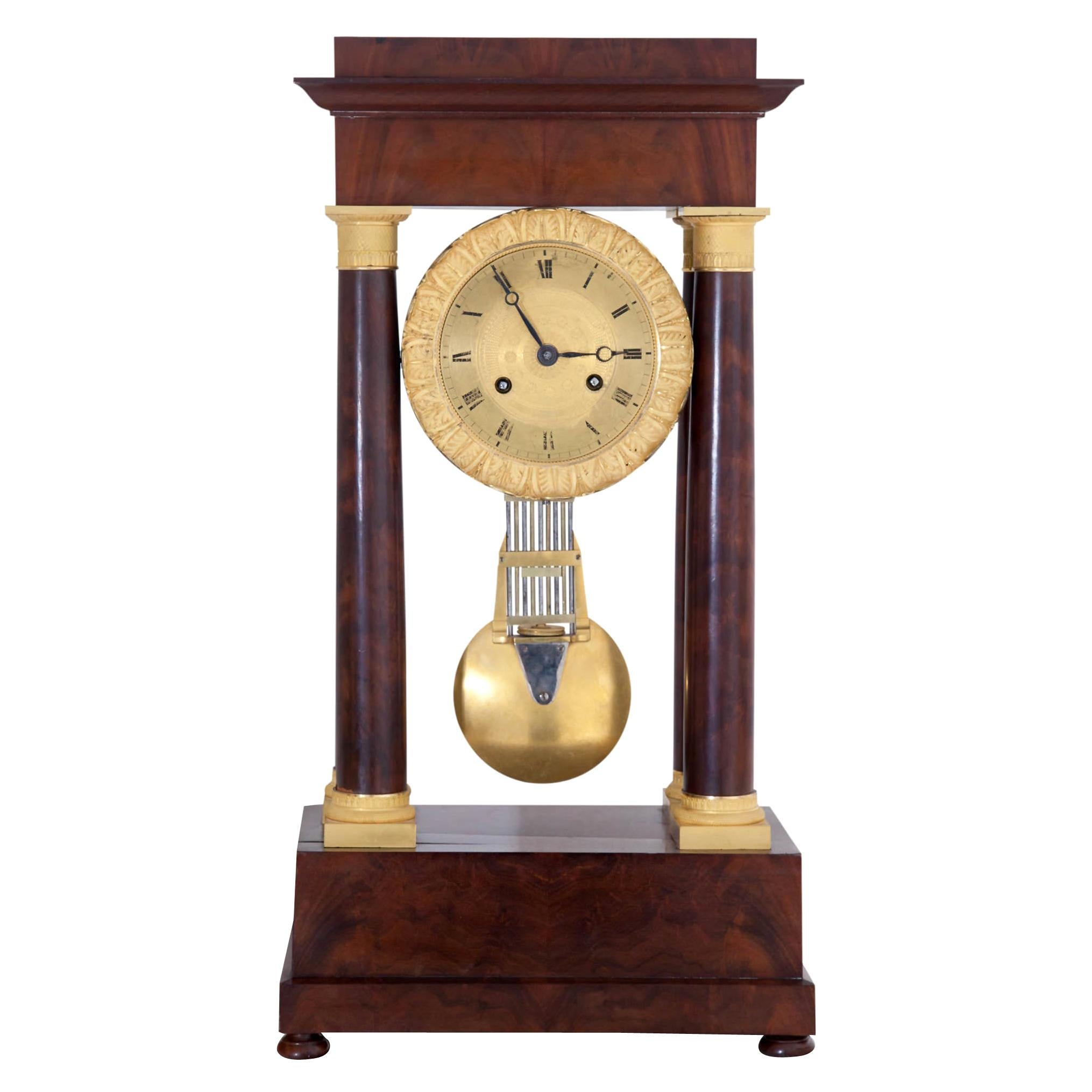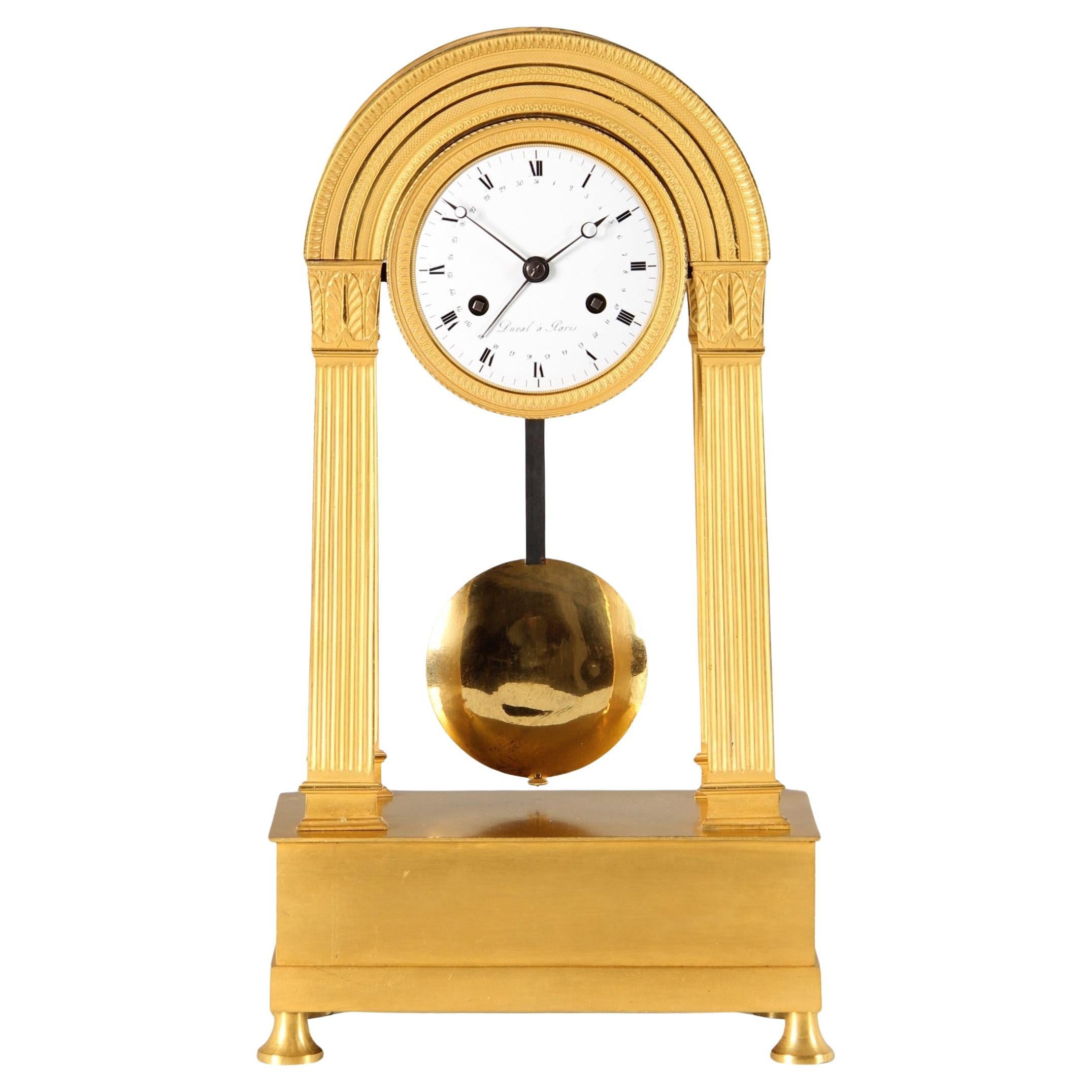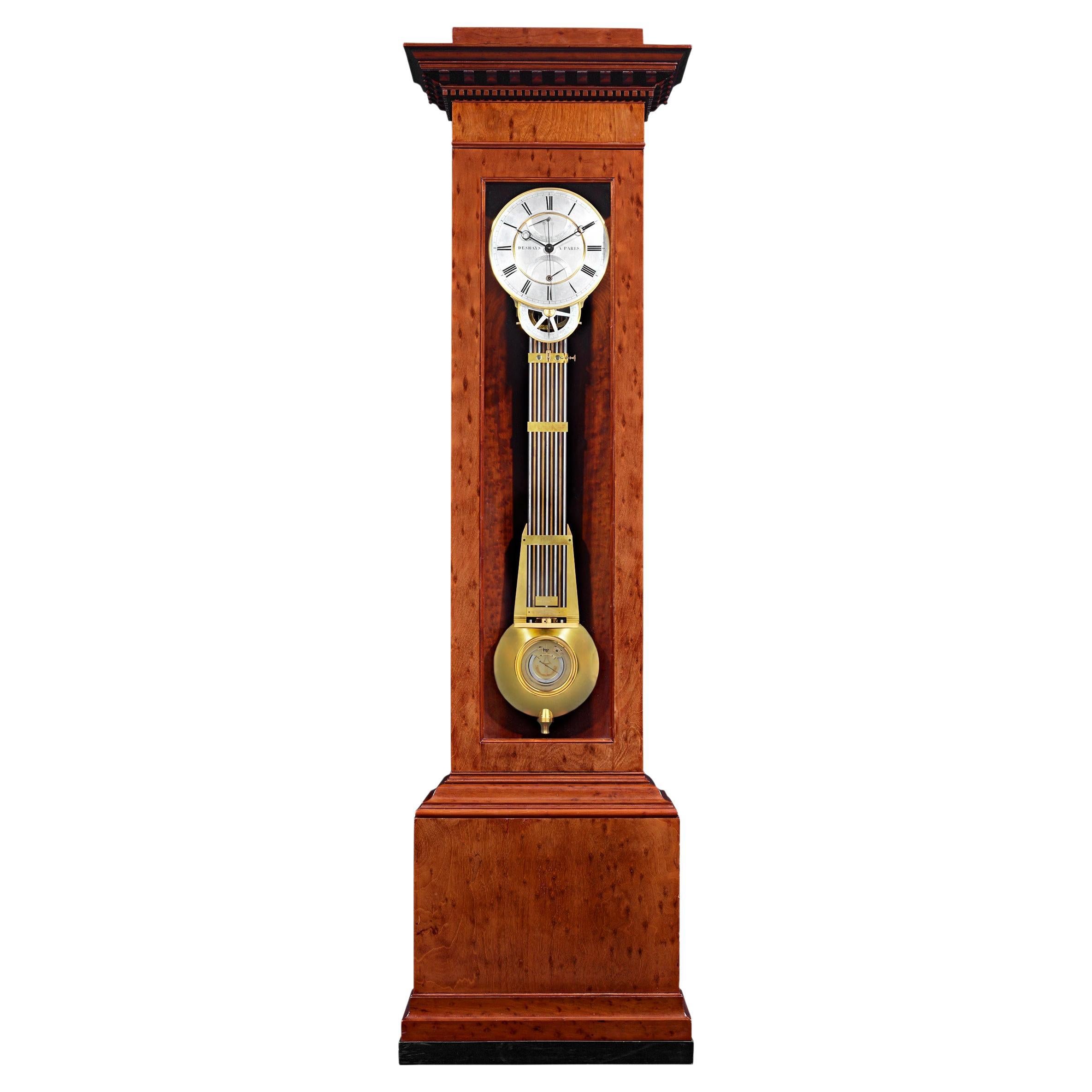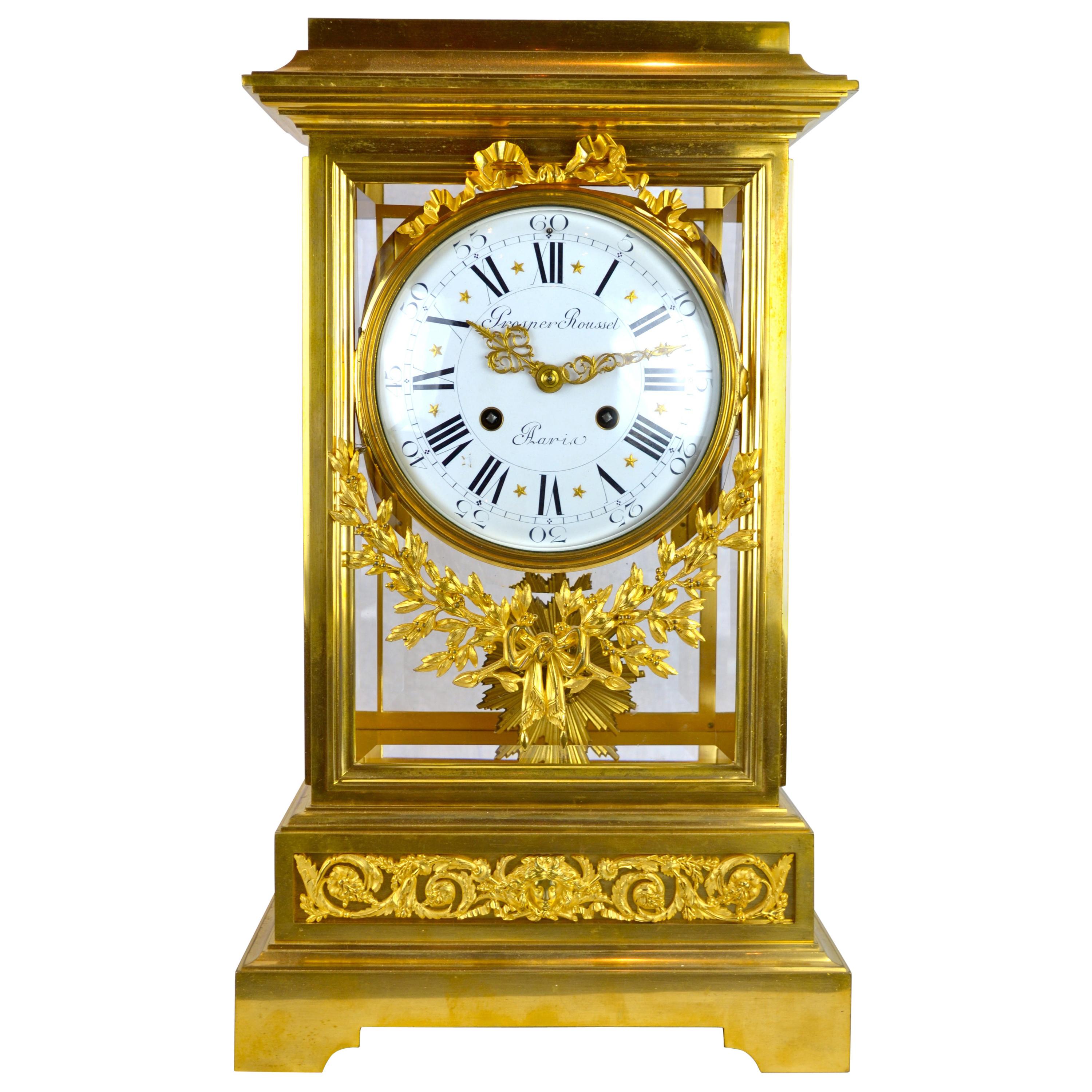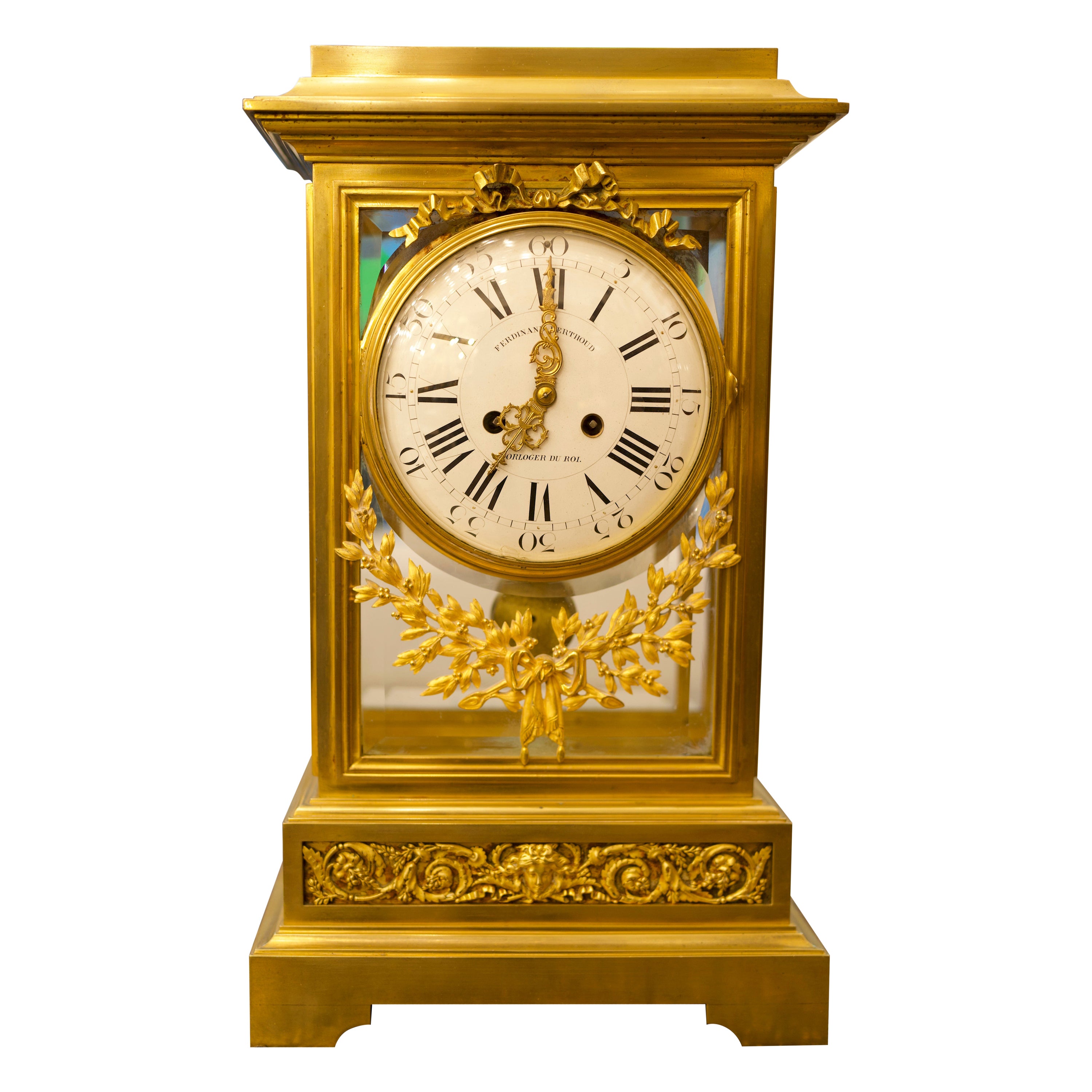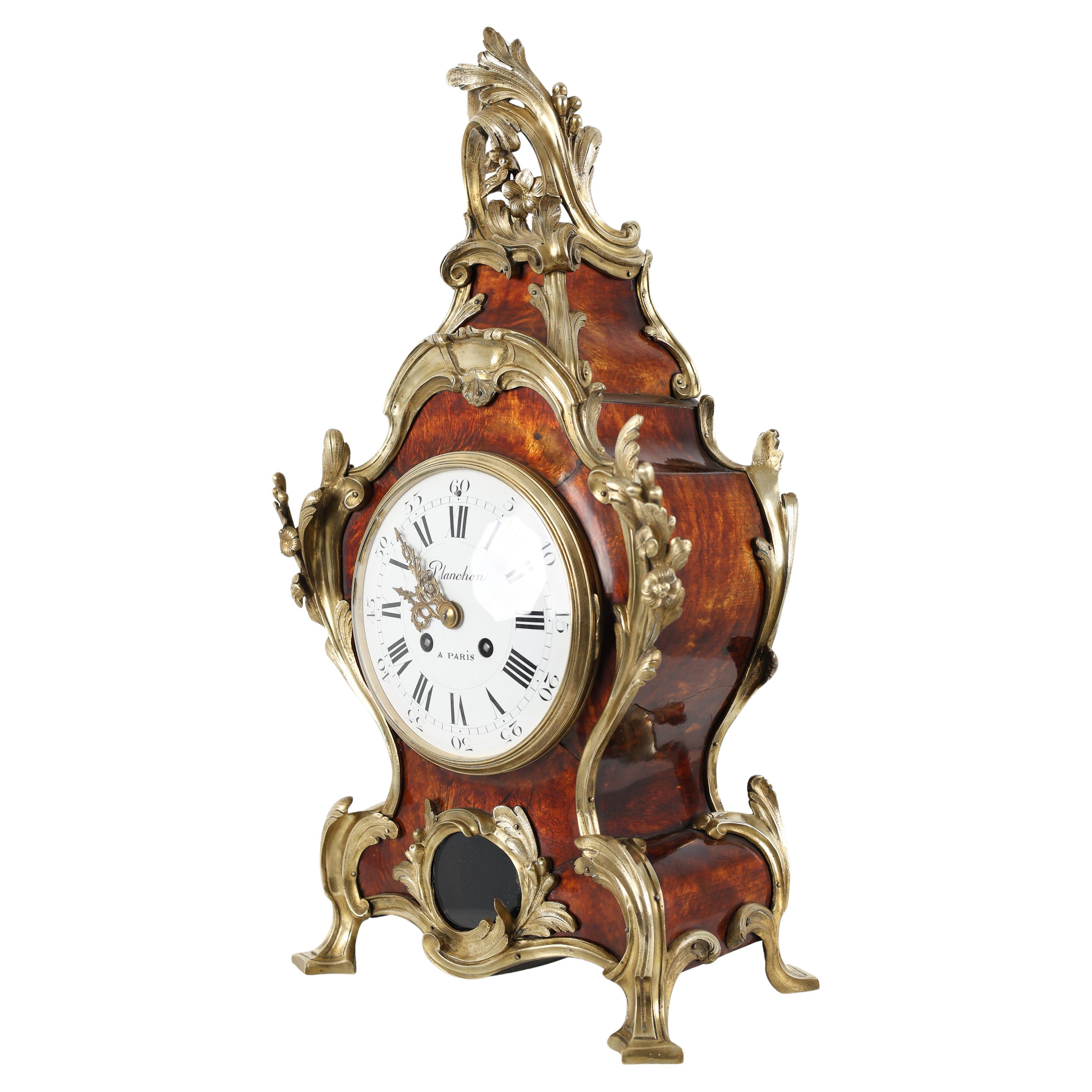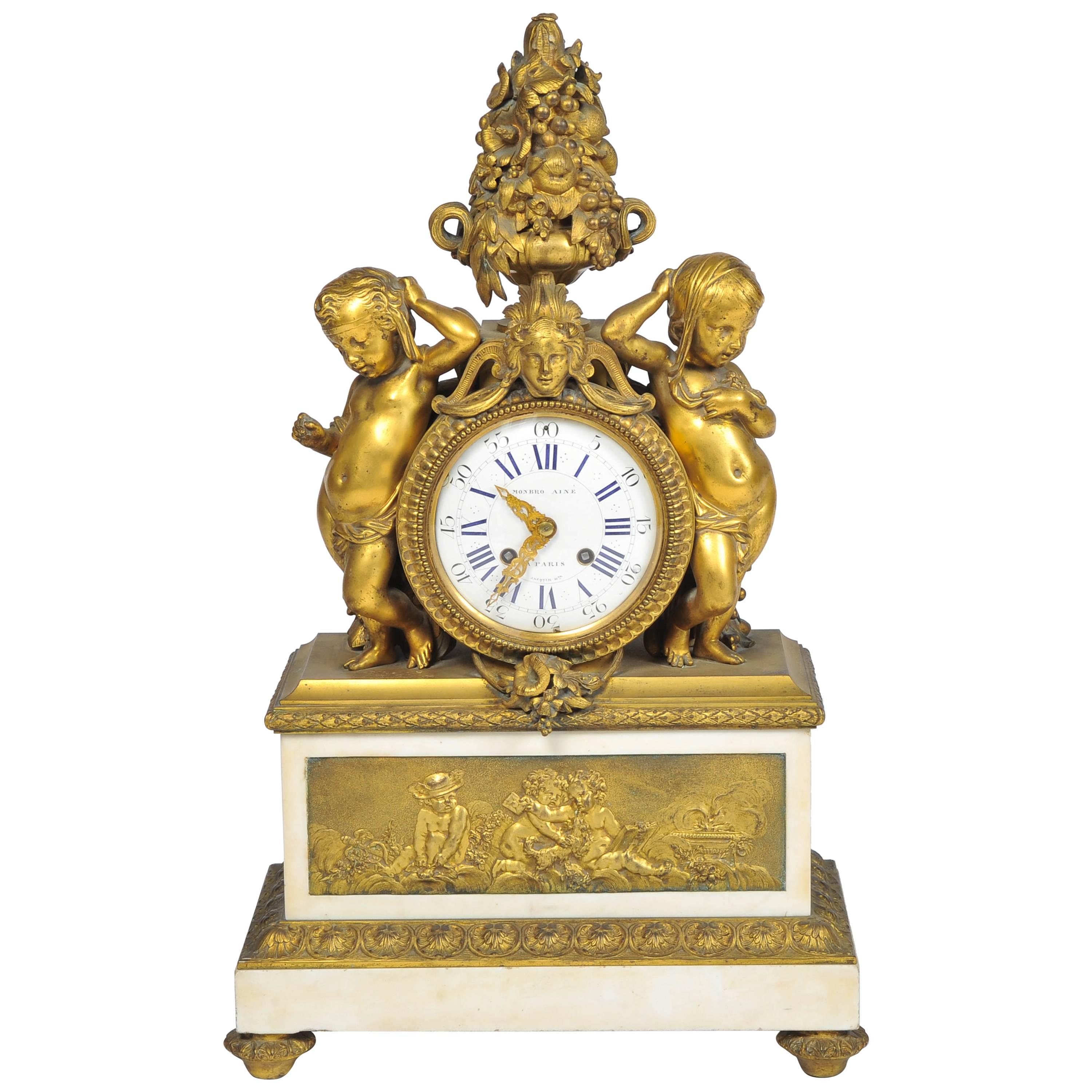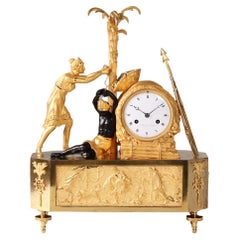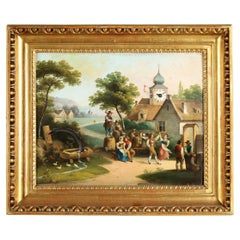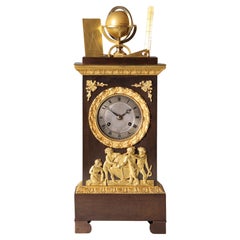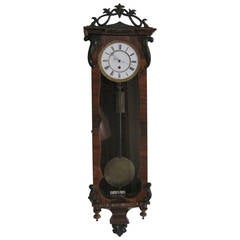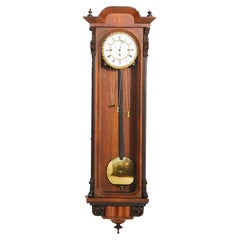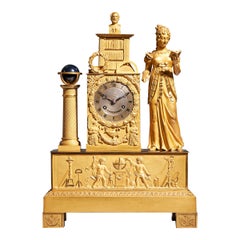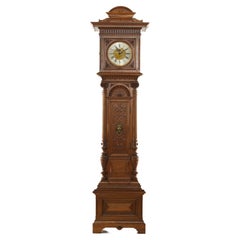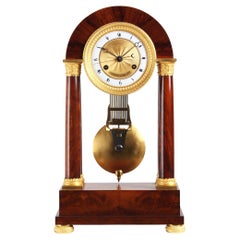
19th Century Regulator by Tarault Jeune, Precision Portal Clock, Paris, c. 1825
View Similar Items
Want more images or videos?
Request additional images or videos from the seller
1 of 20
19th Century Regulator by Tarault Jeune, Precision Portal Clock, Paris, c. 1825
$11,759.35List Price
About the Item
- Dimensions:Height: 19.3 in (49 cm)Width: 11.03 in (28 cm)Depth: 5.91 in (15 cm)
- Style:Restauration (Of the Period)
- Materials and Techniques:
- Place of Origin:
- Period:
- Date of Manufacture:1825
- Condition:Wear consistent with age and use. The movement has been dismantled and cleaned from top to bottom. It runs reliably and accurately. The case and the bronzes have also been cleaned and are in beautiful and authentic condition.
- Seller Location:Greven, DE
- Reference Number:1stDibs: LU5419238495702
About the Seller
4.9
Platinum Seller
Premium sellers with a 4.7+ rating and 24-hour response times
Established in 2014
1stDibs seller since 2020
196 sales on 1stDibs
Authenticity Guarantee
In the unlikely event there’s an issue with an item’s authenticity, contact us within 1 year for a full refund. DetailsMoney-Back Guarantee
If your item is not as described, is damaged in transit, or does not arrive, contact us within 7 days for a full refund. Details24-Hour Cancellation
You have a 24-hour grace period in which to reconsider your purchase, with no questions asked.Vetted Professional Sellers
Our world-class sellers must adhere to strict standards for service and quality, maintaining the integrity of our listings.Price-Match Guarantee
If you find that a seller listed the same item for a lower price elsewhere, we’ll match it.Trusted Global Delivery
Our best-in-class carrier network provides specialized shipping options worldwide, including custom delivery.More From This Seller
View AllEarly 19th Century French Empire Mantel Clock, Portal Pendule, Paris circa 1820
By Duval
Located in Greven, DE
Antique French round arch portal clock
France (Paris)
Bronze, enamel
Empire circa 1820
Dimensions: H x W x D: 47 x 26 x 12 cm
Description:
Very beautiful, strictly architecturally...
Category
Antique Early 19th Century French Empire Mantel Clocks
Materials
Bronze, Enamel
Early 19th Century Ormolu Mantel Clock, Atala freeing Chactas, Paris, circa 1810
Located in Greven, DE
Mantel Clock "Atala and Chactas"
Paris
Bronze (fire-gilt and patinated), enamel
Empire around 1810
Dimensions: H x W x D: 40 x 32 x 11 cm
Description:
Very rare and extremely high quality French mantel clock, so-called Pendule Au Bon Sauvage.
Depicted are scenes from the love story "Atala or the love of two savages in the desert" written by Francois René Vicomte de Chateaubriand in 1801. At the beginning of the 19th century, this was probably the most famous love story in Europe, but today it has been forgotten.
The story, set in present-day Louisiana (USA), is roughly rewritten about the forbidden love between Chactas, a young Indian, and Atala, the beautiful daughter of a Spaniard.
Chactas is captured in a battle between two Indian tribes, chained to a palm tree and is to be sacrificed. Atala wants to save his life and convert him to Christianity. She unties him from the palm tree at night and they flee together into the wilderness of North America. Their love for each other grows stronger and stronger and they have prospects for a future together.
The story takes a tragic turn when Atala, who must remain a virgin due to a vow made by her mother, can no longer withstand the conflict of her feelings and commits suicide.
The main group of characters thus shows Chacta's liberation through Atala. Atala is leaning against a pile of logs. The animal fur thrown over the logs and the weapons leaning against the stack on the right give the impression of a night camp.
The bronze is of rarely beautiful quality, finely chiselled and makes the scene appear very lively. The contrast of fire-gilded and patinated bronze adds tension to the composition.
In the base we see the Entombment as the end of the tragic love story. This bronze work is also very detailed, the interplay of bright and matt gilding makes the flat relief appear much deeper than it is.
The depiction of the mantel clock presented here shows that the exotic was only known from stories and that the bronzier had his own ideas about the appearance of this distant world. The Indian, for example, has very European facial features and his skin was not black in reality, of course. The palm tree was also certainly not found in the North American wilderness.
The heart of the clock is a French pendulum movement, integrated into the wooden pile, with an eight-day power reserve and a lock plate striking a bell on the half and full hour. The pendulum is suspended on a thread, typical of the period. The classically shaped hands, so-called Breguet hands, are also typical of the time.
The enamelled dial has black Roman hour numerals, Arabic quarter hours and bears the signature: Le Roy hr. de Madame A PARIS.
Interesting facts:
The period from 1795 to about 1815 saw the creation of probably the most spectacular group of bronzes: The "Au bon Sauvage" pendulums - depictions of the "Noble Savage".
Today's viewers react to these objects with both fascination and irritation. Enthusiastic on the one hand about the obvious quality of the detailed bronzes and the allure of the exotic, on the other hand distanced and cautious because of the possible discrimination that is suspected behind them. The ambivalence of this feeling motivates the search for the conditions of origin of these pendulums.
Europeans found their new ideal of the natural man primarily in fictional and realistic travelogues about the Indians of North America...
Category
Antique Early 19th Century French Empire Mantel Clocks
Materials
Ormolu
19th Century Biedermeier Picture Clock, Austria, circa 1830
Located in Greven, DE
Biedermeier picture clock with fountain mechanism
Austria
Oil on iron sheet
circa 1830
Dimensions: H × W × D: 45 × 53 × 14 cm
Description:
This rare picture clock depicts a villag...
Category
Antique 1820s Austrian Biedermeier Wall Clocks
Materials
Iron
19th Century Mantel Clock "Astronomy", France circa 1830
Located in Greven, DE
Antique mantel clock on the theme of astronomy
France
Bronze
Charles X around 1830
Dimensions: H x W x D: 48 x 19 x 10 cm
Description:
Unusual and beautifully crafted bronze mante...
Category
Antique 19th Century French Charles X Table Clocks and Desk Clocks
Materials
Bronze
Mid 19th Century English Grandfather Clock with Painted Round Dial
Located in Greven, DE
Antique English grandfather clock with painted dial in mahogany case
The case stands on small round feet and has a wide lower section, above which is a narrower section with a door ...
Category
Antique Mid-19th Century British Grandfather Clocks and Longcase Clocks
Materials
Mahogany
1830s French Table Clock, signed by LESIEUR á Paris, Pendule "Virgil the Poet"
By Lesieur
Located in Greven, DE
Pendule - Virgil the Poet
Paris
Bronze, marble
around 1830
Dimensions: H x W x D: 61 x 43 x 17 cm
Description:
Large and, at around 30 kg, very heavy French bronze clock from the ...
Category
Antique 1830s French Restauration Table Clocks and Desk Clocks
Materials
Siena Marble, Bronze
You May Also Like
Vienna Regulator Wall Clock, 19th Century
Located in Hamilton, Ontario
19th century Vienna Regulator wall clock.
One weight Vienna Regulator with ornate carved head piece.
Category
Antique 19th Century Wall Clocks
19th Century Grande Sonnerie Vienna Regulator Clock
Located in Tarry Town, NY
Mid 19th century Mahogany wood / glass case grande Sonnerie three weight Vienna Regulator clock. The wall clock features a rosewood veneer with ...
Category
Antique 1830s European Wall Clocks
Materials
Brass
$6,000 Sale Price
20% Off
Fine 19th century French ormolu mantel clock (pendule) by Leroy a Paris, c. 1825
By LeRoy
Located in Oxfordshire, United Kingdom
A most beautiful French ornolu mantel clock by Leroy à Paris
A lovely French late Empire/early Charles X mantel clock with an ormolu case, c. 1825. The ormolu brass case depicts a celebration of Science and Learning. It is dominated by a rectangular superstructure containing the movement, flanked by an engine-turned column with a celestial globe on top on the left and an elegant lady reading a book on the right. The superstructure is surmounted by a bookcase and a bust of Socrates...
Category
Antique Early 19th Century French Empire Mantel Clocks
Materials
Brass, Ormolu
19th Century Johann Wien 90 Day Regulator Clock
Located in Tarry Town, NY
19th century hand carved oak case with carved capitals on full length waist columns and bracket feet, 90 day brass time only movement with deadbeat escapement and maintaining power t...
Category
Antique 1880s German Grandfather Clocks and Longcase Clocks
Materials
Brass
$15,200 Sale Price
20% Off
Empire Portal Clock, France, Early 19th Century
Located in Greding, DE
Portal clock on a rectangular, stepped base in mahogany veneered with small bun feet. The stepped architrave is supported by four smooth columns, the capi...
Category
Antique Early 19th Century French Empire Mantel Clocks
Materials
Bronze
$3,647 Sale Price
20% Off
Viennese Portal Clock, 1st Half 19th Century
Located in Greding, DE
An elegant Viennese portal clock resting on a rectangular mahogany base. The ebonized case is richly adorned with fire-gilded bronze appliqués. Flanking the clock are carved decorati...
Category
Antique Early 19th Century Austrian Empire Mantel Clocks
Materials
Marble, Bronze
Recently Viewed
View AllMore Ways To Browse
Half Round Desk
Antique Counterweights
French Regulator Clock
Portal Clock
Antique Bronze Watch
Blue Table Clocks
Cartier Clock Art Deco
Art Deco Bakelite Clocks
Shagreen Galuchat
Swiss Alarm Clock
Vintage Alarm
Vintage Atmos Clock
Vintage Clock Roman Numerals
Antique German Table Clocks
Brass Skeleton Clock
Calendar Clock
Jaeger Lecoultre Atmos Clock
Jaeger Lecoultre Atmos
